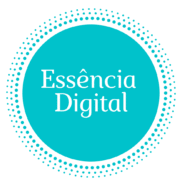In the creative world, your portfolio is your single most important business asset. It’s more than a gallery of your past work; it’s a strategic tool designed to answer a potential client’s most crucial question: “Are you the right person to solve my problem?” A great portfolio doesn’t just show what you did; it powerfully communicates how you think and why your work matters.
In a crowded freelance marketplace, a portfolio that is merely a collection of pretty images is not enough. To truly stand out, you need to be intentional, strategic, and a compelling storyteller. This guide will walk you through the essential steps to transform your portfolio from a simple showcase into your most effective marketing engine.
Start with Strategy: Define Your Portfolio’s “Job to Be Done”
Before you select a single project, you must first define your portfolio’s purpose. A portfolio that tries to be for everyone often ends up being for no one. Ask yourself these critical strategic questions:
- Who is my ideal client? Am I targeting tech startups, established corporate brands, small businesses, or editorial publications? The answer will dictate your tone, style, and project selection.
- What kind of work do I want to attract? Your portfolio is a magnet. If you fill it with work you don’t enjoy, you will attract more of that same work. Showcase the projects that align with your future goals, not just your past jobs.
- What is the primary action I want a visitor to take? Is it to fill out a contact form, schedule a call, or download your resume? Your entire portfolio should be designed to guide the user toward this single call to action.
The “Quality Over Quantity” Rule: Curate, Don’t Clutter
Think of your portfolio as a curated museum exhibition, not a dusty storage attic. It’s tempting to include every project you’ve ever completed to show the breadth of your experience, but this is a mistake. A cluttered portfolio overwhelms visitors and dilutes the impact of your best work.
Quality will always beat quantity. Aim to showcase 4 to 8 of your absolute strongest and most relevant pieces.
Use this simple filtering process for every potential project:
- Does this project accurately reflect the type of work I want to do more of?
- Does this project clearly demonstrate a key skill or solve a significant business problem?
- Am I genuinely proud of both the process and the final result of this work?
If the answer to any of these is “no,” leave it out. It’s better to have four incredible case studies than twenty mediocre examples.
Go Beyond the “What”: Showcase Your “How” and “Why” with Case Studies
Potential clients don’t just hire you for your final deliverables; they hire you for your thinking, your process, and your problem-solving abilities. The most effective way to showcase this is by turning each project in your portfolio into a mini-case study.
For each project, follow a simple storytelling structure:
1. The Challenge
Start with a brief, clear description of the client’s problem. What goal were they trying to achieve? What obstacle were they facing? (e.g., “A new e-commerce brand needed a visual identity that would stand out in a saturated market.”)
2. Your Role
Be specific about your contribution. Were you the Lead Designer, UX Writer, or sole Photographer? This provides clarity, especially if you worked as part of a team.
3. The Process
This is your chance to shine. Show, don’t just tell. Include behind-the-scenes assets like:
- Initial sketches or wireframes
- Mood boards and style explorations
- User flow diagrams
- Before-and-after comparisons
Briefly explain why you made certain decisions. This demonstrates your strategic thinking and builds immense trust.
4. The Outcome
Close the loop by presenting the final result. Whenever possible, tie your work to a tangible outcome. This could be a powerful client testimonial or a concrete metric (e.g., “The new branding led to a 15% increase in social media engagement,” or “The redesigned landing page improved user conversion rates by 22%.”).
The Power of Presentation: Your Portfolio’s First Impression
Think of your portfolio website as the very first project a potential client will see. Its design, ease of use, and overall professionalism are a direct reflection of your own standards. Even if you aren’t a web designer, the presentation must be clean, modern, and effortless for a visitor to navigate.
- Prioritize a clean and focused layout: Use ample white space, consistent typography, and a simple color palette. Your design should be a quiet, elegant frame that makes your work the hero, not a loud distraction that competes for attention.
- Design for effortless navigation: A visitor should understand who you are and what you do within seconds. Your best work should be easily accessible, and your navigation menu should be simple and intuitive.
- Choose the right platform for your goals:
- For community and discoverability: Platforms like Behance or Dribbble are excellent for visual creatives looking to be found and engage with peers.
- For professional ease of use: Adobe Portfolio (often included with Creative Cloud) and Squarespace offer beautiful, user-friendly templates that get you online quickly and professionally.
- For complete creative and technical control: Tools like Webflow or Framer allow you to build a fully custom site. This approach is ideal for web designers who want the portfolio itself to be a testament to their technical skills.
Make a Human Connection: Your “About Me” Story
Your “About” page is where you bridge the gap between being a “service provider” and becoming a “trusted partner.” It is often one of the most visited pages, as clients are not just hiring skills; they are hiring a person they can collaborate with.
Avoid a dry, third-person biography. Instead, craft a short, authentic story that connects with your ideal client.
- Your Mission and “Why”: What drives you as a creative professional? What kind of problems are you passionate about solving? This gives clients insight into your values.
- Your Expertise: Clearly and confidently state what you specialize in. Position yourself as an expert in your niche.
- A Touch of Personality: Share a brief, relevant detail that makes you relatable—a hobby, an interest, or a unique part of your journey. This helps build rapport.
- A Clear Call to Action: End with a clear and inviting next step. A simple “Think we’d be a good fit? Let’s build something great together,” followed by a link to your contact page, is highly effective.
Conclusion: Your Portfolio is Your 24/7 Marketing Engine
It’s time to stop thinking of your portfolio as a passive gallery or a chore that needs updating. Start treating it as your most powerful marketing engine. A strategic, well-curated, and beautifully presented portfolio works for you around the clock—attracting the right clients, filtering out the wrong ones, and powerfully communicating your true value.
Invest the time to build it with intention. Curate your best work, tell compelling stories about your process, and present it all with unwavering professionalism. When you do, your portfolio will cease to be a list of what you’ve done and become a powerful statement about what you can do next.

